Software plays an increasingly vital role in conservation, helping to protect and manage biodiversity through innovative technological solutions. It also facilitates collaboration among researchers, local communities, and governments, empowering them to develop sustainable conservation strategies. However, many of us working in conservation tech don't have the benefit of a large team of software experts to collaborate with or bounce ideas off of. We aim to change that.
This group is for anyone interested in applying software to conservation and wildlife research. Whether you're a developer eager to contribute to conservation or a newbie with valuable data and ideas but limited software experience, this group connects people with diverse expertise. It provides a space for asking questions, sharing resources, and staying informed about new technologies and best practices. We are also committed to supporting technologists and conservationists from the Global South, ensuring that everyone has access to the tools, knowledge, and opportunities to contribute meaningfully.
Our goal is to foster collaboration and avoid "reinventing the wheel" by sharing solutions, whether it's an application, design approach, or a simple script. We also aim to lower barriers to entry by offering mentorship and guidance and providing feedback on technical ideas. This supportive community is a place to learn, connect, and contribute to the advancement of conservation through software. Whether you're looking for software and mobile app developers to help you with your conservation tech needs, have questions about development, are looking for resources, or would like to share your own app, software, or gaming tools, this is the group for you!
Resources
Header photo: Trevor Hebert
Group curators
Wildlife Protection Solutions (WPS)
Software Engineer in Conservation Tech



- 2 Resources
- 15 Discussions
- 10 Groups
Wildlife Protection Solutions (WPS)
Director of Technology at Wildlife Protection Solutions. Primarily focuses on leveraging machine learning and advanced data analytics to combat poaching, monitor biodiversity, and predict environmental threats.
- 0 Resources
- 1 Discussions
- 5 Groups
No showcases have been added to this group yet.
Soil science, droughts effect of poverty, human rights advocate, wage equality in Europe, Drones in Digital Education




- 4 Resources
- 11 Discussions
- 18 Groups
- 0 Resources
- 1 Discussions
- 1 Groups
- @samrozell
- | he/him
- 0 Resources
- 0 Discussions
- 5 Groups
- @himalyanibex
- | He/him
Tech Entrepreneur, ex-Microsoft, ex-Google, believe in technology for greater good, insatiable curiosity towards seeking knowledge & understanding covering disciplines like game theory, mechanism design, economics, ecology, agent-based modeling etc. Hands on with IoT, AI/ML etc.
- 0 Resources
- 2 Discussions
- 4 Groups
- @Arjun_Viswa
- | S
- 0 Resources
- 0 Discussions
- 26 Groups
3point.xyz
Over 35 years of experience in biodiversity conservation worldwide, largely focused on forests, rewilding and conservation technology. I run my own business assisting nonprofits and agencies in the conservation community



- 6 Resources
- 69 Discussions
- 12 Groups
- 0 Resources
- 0 Discussions
- 12 Groups
Pl@ntNet
Backend and DB engineer for Pl@ntNet at Cirad, Montpellier, France

- 0 Resources
- 1 Discussions
- 4 Groups
- @PierreBonnet
- | Pierre
https://orcid.org/0000-0002-2828-4389

- 0 Resources
- 1 Discussions
- 6 Groups
Open Source for Nature | Conservation focused Technologist

- 0 Resources
- 8 Discussions
- 7 Groups
Movement ecologist using conservation technology to study the behaviors of animals in the wild to understand how they cope with change and most effectively address conservation- and conflict-related issues.


- 0 Resources
- 10 Discussions
- 11 Groups
- @tobiaspetri
- | he/him
Schäuffelhut Berger GmbH
data science & algorithmic development for movement ecology



- 11 Resources
- 33 Discussions
- 10 Groups
Article
How do we actually know a whale weighs 40 tonnes? After all, we can’t exactly capture an animal the size of a bus and simply put it on a scale. Fredrik Christiansen explains their new, non-invasive way of weighing...
9 October 2019
Sharing failure, tech support for conservation, roaming mentors, conservation tech hype cycles and developing new road maps - participants in our tech workshops at ICCB 2019 shared an abundance of ideas for how to shape...
21 August 2019
ExCiteS requires the services of an experienced technology delivery partner to design and develop a user-facing tool that couples with Sapelli, a data-gathering platform designed for usage by non-literate and indigenous...
12 August 2019
The International Gorilla Conservation Programme (IGCP), a coalition of World Wildlife Fund and Fauna & Flora International, has teamed up with Inmarsat, the world’s leading mobile satellite communications company,...
23 July 2019
Ol Pejeta Conservancy partners with conservation and technology organisations to kick-start a research and innovation centre for wildlife conservation
31 May 2019
Tom Swinfield and colleagues at the Forest Ecology and Conservation Group have assessed the quality of three dimensional forest models produced from drone surveys, and conclude that concerns about their quality for...
31 May 2019
FLIR announces the launch of their Conservation Discount Program, which offers projects the opportunity to qualify for a 30% discount on select thermal, visible, and maritime products. Share your conservation plan and...
23 May 2019
This webinar recording will provide a brief overview of current SMART functionality, highlight case studies of large scale and innovative SMART deployments, and detail how SMART is embracing and leveraging new...
21 May 2019
In February, we released an open call for the WILDLABS TECH HUB, offering 3 months of support for solutions using technolgy to tackle the illegal wildlife trade. We were overwhelmed by an incredible 37 submissions,...
13 May 2019
Ted Schmitt joined us for a lunchtime lecture in which he shared his experiences working across Africa the past five years with protected area managers, anti-trafficking organisations, and scientists to effectively...
22 November 2018
Funding
Empowering communities to monitor & report on their environment
19 February 2018
Following the UK Government’s landmark announcement of plans to introduce a complete ban on the domestic trade in ivory, it was fitting that a new machine learning product designed to tackle the supply end of this...
6 December 2017
August 2025
November 2025
event
September 2024
event
48 Products
Recently updated products
| Description | Activity | Replies | Groups | Updated |
|---|---|---|---|---|
| Hi, thanks jval and smarye for your ideas, I will look into it. |
|
Software Development | 7 years 11 months ago | |
| Hi Kate, At ZSL, we're continuing to work with the WildTrack team on their solution - now named SmartSkout. We've just had an article published on the Guardian... |
+1
|
Software Development | 7 years 11 months ago | |
| Dear Colleagues, The SMART Partnership, in collaboration with Flora & Fauna International and WCS Belize, is organizing and/or... |
|
Software Development, Latin America Community | 7 years 11 months ago | |
| Thanks for all the interest everyone! My colleague Jaymie and I are so excited that people are checking out our game. Let us know if you have any questions or suggestions! |
|
Software Development | 8 years ago | |
| Hi Fleur, I see now that the Merlin App bird packs are limited to North America. You could certainly contact the Cornell University Lab of Ornitology (http://www.birds.cornell.... |
|
Software Development | 8 years ago | |
| Thanks for sharing this, Drew! We have a number of SMART focused case studies and articles in our Resources area that might also be worth checking out if you're considering... |
|
Software Development | 8 years ago | |
| Hello Baker, What kind of website you are trying to create? Like do you just want to share research data to those organizations or is it just to share reports (as in... |
|
Software Development | 8 years 1 month ago | |
| This might be of interest - in collaboration with ZSL, the Extreme Citizen Science group at UCL have been deploying tools in Cameroon to... |
|
Software Development | 8 years 1 month ago | |
| Hello WILDLABS Community! Have you thought about creating your own mobile mapping app? Not quite sure where to start? Looking... |
|
Software Development | 8 years 1 month ago | |
| This upcoming conference might be of interest: By the end of this intensive 4-day conference for women and non-binary people in... |
|
Software Development | 8 years 2 months ago | |
| Hi Steph, Actully, it's my presentation topic in class, Now I don't have a data but have to deliever an information in general. So can I produce depctive data... |
|
Software Development | 8 years 4 months ago | |
| Could imagine this might interest some of you: Big Ocean Button Challenge Mobile apps to turn ocean data into the products and... |
|
Software Development | 8 years 5 months ago |
Open Sustainable Technology directory
2 December 2024 4:17pm
Catch Up on the December Software Developer Community Call
26 November 2024 5:26pm
MegaDetector V6 and Pytorch-Wildlife V1.1.0 !
9 November 2024 3:34am
11 November 2024 7:58pm
Thank you so much! We are also working on a bounding box based aerial animal detection model. Hopefully will release sometime early next year as well. It would be great to see how the model runs on your aerial datasets! We will keep you posted!
22 November 2024 5:13pm
Hi Zhongqi! We are finalizing our modelling work over the next couple of weeks and can make our work availabile for your team. Our objective is to create small (<500k parameters) quantized models that can run on low-power ARM processors. We have custom hardware that we built around them and will be deploying back in Patagonia in March 2025. Would be happy to chat further if interested!
We have an active submission to Nature Scientific Data with the annotated dataset. Once that gets approved (should be sometime soon), I can send you the figshare link to the repo.
Need advice on data for an app that recommends plants.
21 November 2024 1:47pm
21 November 2024 8:41pm
It's a really good question, Colleen!
Ideally, I would work with two developers, or at least one developer and one other party who knows what developing an app like this would mean. This will lower the risk that the developer answers your question too much in their advantage. So this is one reason why it is a good question, and maybe this is why you ask it. However, if you really trust your developer not to take advantage, then go with just her/him/they.
It's also a good question because there is no easiest way to go about this if you're on a budget. You mention that you do not have a tech background, so here comes some explaining. If I misunderstood, then please skip and continue at "Back to 'the easiest way to go about this'"
There are at least two things you should be really aware of when it comes to software development.
The first is that once the basic data structure is defined and the software built around it, it is extremely costly to change the data structure. It's like deciding after the car has been built, that the engine should go to the back of the car instead of the front.
The second thing is that the basic data structure is dependent on ( among other things, but I'd say these are the two most important factors ) the complexity of what needs to be achieved and the speed at which it needs to be done.
The difficulty is that the required complexity and the speed may change over time, which brings one back to the car and engine situation. Changes in complexity and speed requirements may be the result of many things, one of which is success. You get far more clients than anticipated, so the system needs to be scaled up. In addition, with more users come more feature requests ( this can work both ways: new features result in more users, and more users may result in more feature requests ).
There is no real solution to this problem ( well, except not growing beyond the point that the first design can handle ). When it comes to scaling up, one vendor may claim that their database back bone easily scales up. Maybe so - but it may come at a price and they may also underestimate your and their own future needs. When it comes to changes in complexity, additional features can in the beginning probably be added on without changing the basic data structure. Maybe an additional row of seats at the back of the car, a trailer hook, bigger lamps, a roof-rack, a trailer, suitcases on the rack. At some point the car will need a new and bigger engine to carry all those add ons and keep at the same speed.
Here is a prediction : the more you stress cheap and efficient at the beginning, the bigger these problems will be later on. But when the business is successful, there will be more money to invest in scaling up and redesigning. Obviously yes, but in terms of the car metaphor, you may find that you want the car to be kept running with all its added on features, while the engine is replaced and moved to the back. It may be possible, but perhaps out of reach of patience and the increased income.
Back to 'the easiest way to go about this':
Invest a little effort to find out not only what are the minimum requirements for the MVP, but also what else you or your clients may want in the future. The developer should then have these future requirements in mind (and future upscaling) when they start developing for the minimum ones. This means, develop a somewhat more generic data structure than what is necessary for the MVP. This will cost some more at the beginning but should save a lot later on. I'm writing 'should' not 'will' on purpose. It's a balancing act because taking too much into account has the risk of over-engineering for a future that may not happen, or develop differently than expected. Like I said, there is no easiest way out.
A few more detailed comments
If there is no API for a source, try to go around it if possible at the beginning. API's are made with some long term stability in mind. Websites and web pages not necessarily so or less so. They will require more monitoring and maintenance on the web scraping routines.
Perhaps the developer may not be aware of the necessary pre-work that needs to be done if the pre-work depends on biological knowledge needed to transform the data from your data sources into data that allows easy ( and fast ) calculation of results to the users.
Help us test PAMGuard for macOS
19 November 2024 12:16pm
What new languages, tools, and frameworks are you excited about?
14 November 2024 6:58pm
Share your thoughts for the Software Development group!
23 September 2024 4:58pm
4 October 2024 5:01pm
Hi Margaux, thanks for starting this group - it certainly is an essential one for conservation tech enthusiasts!
7 October 2024 5:16pm
Thanks for your feedback! That is a great question, and one we would certainly like to explore further in a Variety Hour panel or discussion!
15 October 2024 7:59pm
I think this should be a high priority for one of our initial discussions and I also believe we should revisit on some cadence as well. It is so open ended and I think it is worthwhile for not only those of us who have been in the space for awhile but newcomers as well.
Automatic extraction of temperature/moon phase from camera trap video
29 November 2023 1:15pm
7 September 2024 9:44am
I just noticed that TrapTagger has integrated AI reading of timestamps for videos. I haven't had a chance to try it out yet, but it sounds promising.
28 October 2024 7:30pm
Small update. I uploaded >1000 videos from a spypoint flex camera and TrapTagger worked really well. Another program that I'm currently interested in is Timelapse which uses the file creation date/time. I haven't yet tried it, but it looks promising as well.
1 November 2024 12:29pm
Hi Lucy,
I now realised it is an old thread and you most likely have already found a solution long ago but this might be of interest to others.
As mentioned previously, it is definitely much better to take moon phase from the date and location. While moon phase in general is not a good proxy for illumination, that moon phase symbol on the video is even worse as it generalises the moon cycle into a few discreet categories. For calculating moon phase you can use suncalc package in R but if you want a deeper look and more detailed proxy for moonlight intensity, I wrote a paper on it
with accompanying R package called moonlit
GitHub - msmielak/moonlit: moonlit - R package to estimate moonlight intensity for any given place and time
moonlit - R package to estimate moonlight intensity for any given place and time - msmielak/moonlit
When it comes to temperature I also agree that what is recorded in the camera is often very inconsistent so unless you have multiple cameras to average your measurements you are probably better off using something like NCEP/NCAR Reanalysis (again, there is an R package for that) but if you insist on extracting temperature from the picture, I tried it using tesseract and wrote a description here:
Good luck!
Looking for a Technical Co-founder/CTO - Native Plant Platform
30 September 2024 4:26pm
Getting a Software Job in Conservation
25 October 2024 9:18pm
LEAPs and bounds
MS and PhD Opportunities in Ocean Engineering and Oceanography
6 October 2024 9:44am
Biodiversity Data Engineer
Support no-code custom AI for camera trap images by filling out this survey
2 October 2024 10:43pm
Building a biodiversity startup focused on getting landowners to use native plants
23 September 2024 3:37pm
30 September 2024 10:06pm
This sounds a similar tool you may want to check out - Ecodash.ai
1 October 2024 2:40pm
Thanks! Do you happen to know how to get in touch with the folks leading this initiative?
1 October 2024 2:47pm
I'm not affiliated, I just happened across it... not sure who is actually leading it.
Quality Assurance Lead for FieldKit
25 September 2024 5:29pm
Design-led innovation for nature
20 September 2024 2:24pm
Looking to understand SMART
31 July 2024 7:06pm
9 August 2024 1:30pm
In addition to the suggestions already listed, I'd recommend engaging with the SMART Community Forum:
There are also many peer reviewed papers on the topic, for example:
Conservation Technology - Google Books
The global loss of biodiversity is occurring at an unprecedented pace. Despite the considerable effort devoted to conservation science and management, we still lack even the most basic data on the distribution and density of the majority of plant and animal species, which in turn hampers our efforts to study changes over time. In addition, we often lack behavioural data from the very animals most influenced by environmental changes; this is largely due to the financial and logistical limitations associated with gathering scientific data on species that are cryptic, widely distributed, range over large areas, or negatively influenced by human presence. To overcome these limitations, conservationists are increasingly employing technology to facilitate such data collection. Innovative solutions have been driven by dramatic advances in the conservation-technology interface. The use of camera traps, acoustic sensors, satellite data, drones, and computer algorithms to analyse the large datasets collected are all becoming increasingly widespread. Although specialist books are available on some of these individual technologies, this is the first comprehensive text to describe the breadth of available technology for conservation and to evaluate its varied applications, bringing together a team of international experts using a diverse range of approaches. Conservation Technology is suitable for graduate level students, professional researchers, practitioners and field managers in the fields of ecology and conservation biology.
http://www.primate-sg.org/storage/pdf/VJP_3_4_pp59-68.pdf
Willingness to Adopt the Spatial Monitoring and Reporting Tool (SMART): The Case of Ugalla Game Reserve, Tanzania. | EBSCOhost
Discover this 2021 paper in Journal of Education, Humanities & Sciences (JEHS) by Magige, Flora John; Nahonyo, Cuthbert L.; Wilfred, Paulo; et. al. focusing on: TANZANIA; PROTECTED areas; EMPLOYEE training; HUMAN resources departments; LAW enforcement; GAMES
Law Enforcement for Wildlife Conservation (Chapter 2) - Artificial Intelligence and Conservation
Artificial Intelligence and Conservation - March 2019
Asia-Pacific Forest Sector Outlook: Innovative forestry for a sustainable ... - Pingault, N., Roshetko, J.M., Meybeck, A. (eds.) - Google Books
Young students and people, formally or informally engaged in the forest sector, will be the guardians and managers of tomorrow’s forests. Technology savvy, the youth can play an instrumental role in the uptake and scaling-up of innovative technologies (whether digital technologies, biological technologies, technical innovations on processes and products, or innovative finance and social innovations), able to advance sustainable development in the forest sector in the region. Young people can bring in the innovation debate forward-looking perspectives and out-of-the-box thinking. This is why FAO and CIFOR/FTA decided to strengthen their voice in the debate, relaying their experiences and propositions for sustainable innovation in the forest sector. This FAO and CIFOR co-publication gathers 13 youth contributions, carefully selected. These contributions illustrate, in various contexts, the potential of innovative technologies to advance sustainable forestry and sustainable forest management in the Asia-Pacific region.
26 August 2024 10:42am
Have you looked at some of the case studies published on SMART website. Also SMART webinars on Youtube could also interesting to understand the software.
Also recommend looking at SMART alternative EarthRanger which is far more simpler than SMART.
EarthRanger: Protecting Wildlife With Real-Time Data
EarthRanger: Protecting Wildlife With Real-Time Data
18 September 2024 10:52am
Hi loveness
Comprehending the given answers, I hope this link will help you understand more about SMART. its contain courses of SMART training
https://smart.campusuci2.com/course/index.php?categoryid=5
Thanks
JavaScript developer at Octophin
3 September 2024 3:18pm
Path towards careers blending software, complex systems and biomimicry...
25 August 2024 6:40pm
WILDLABS Virtual Meetup: Bioacoustics Data Analysis and AI
22 August 2024 7:22pm
Using app-building tools for conservation monitoring
1 February 2018 5:19pm
15 March 2018 1:19am
I've just started looking at an app called ProofSafe, which will probably do what you want.
16 May 2018 5:42am
Hi @djscrazyhorse
I've been looking at a similar thing. I actually decided against it in the end, and instead to take a tack of developing a solution for a particular niche.
I just published an article about the thought process here:
https://medium.com/mdes-environmental-social-impact/photo-monitoring-for-the-flax-roots-557749cdb6f3
Would love to hear your thoughts.
Any reason you went with those particular App Builder solutions, out of interest?
11 August 2024 7:25pm
Hi Sam,
Your medium article is an interesting tale from an entrepreneurial perspective.
Are you still working on the app? How did the story end?
cheers
Frank
AI and Ecology Research Infosession
1 August 2024 3:58pm
23 August 2024 9:44pm
Tutorial: model quality estimation with Firetail 12
9 July 2024 8:43am
31 July 2024 6:44pm
so great!!!
Move BON Development: Follow up discussion
19 June 2024 12:02pm
11 July 2024 10:14pm
You can catch up on the recording at that same link to the June Variety Hour! Lacey's fabulous talk starts around the 9:40 mark :)
12 July 2024 5:38am
Hi Talia!
I feel like the topic is so broad that it might help to put some constraints around things, see what works, and then broaden those out. I have a lot of ideas regarding the data monitoring and collection side based on the other sensor and observation networks we've set up in the past.
There may also be some potential scope to incorporate things like data collection and integrated monitoring to the Build Your Own Datalogger series where the system is updated to feed data into the observation network.
It'd probably take a bit of discussion and coordination. Let me know if interested. I'm fine to jump on a call or discuss via email too.
22 July 2024 9:24pm
@cmwainaina please take a look



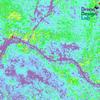



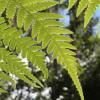





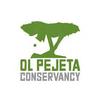









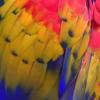


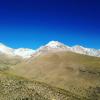







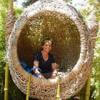
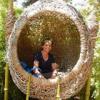







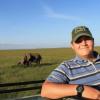











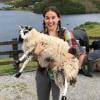




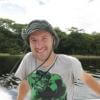
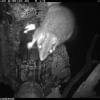





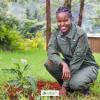
11 November 2024 7:57pm
Hello Patrick, thanks for asking! We are currently working on a bioacoustics module and will be releasing some time early next year. Maybe we can have some of your models in our initial bioacoustics model zoo, or if you don't have a model yet but have annotated datasets, we can probably train some models together? Let me know what you think!